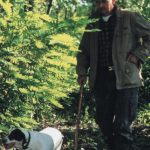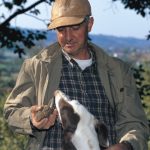
Name
White Truffel of Alba
Seal of quality
Prodotto agroalimentare tradizionale (PAT) / Typical Food Farming Product.
Description
The White truffels are non-cultivable underground mushrooms that grow in mycorrhizic symbiosis with specific arboreous trees such as:
- the English Oak (Quercus robur)
- Turkey oak (Q. cerris)
- oak (Q. petraea)
- Downy Oak (Q. pubescens)
- black poplar (Populus nigra)
- white poplar (P. alba)
- Caroline (P. deltoides cv. carolinensis)
- aspen (P. tremula)
- Willow (Salix caprea)
- osier (S. viminalis)
- white willow (S. alba)
- lime (Tilia platyphyllos)
- hornbeam (Ostrya carpinifolia)
- hazel (Corylus avellana)
They can be of various shapes, from globular to flat, colour of the outer part (peridio) from milk white to ochre yellow and internal pulp (gleba) with brown streaked furrows. Because of its characteristic and unique fragrance, the white truffle has become the forbidden dream, the object of madness and passion for every connoisseur. It is difficult to describe in words the fragrance this gold nugget exudes: the aromatic array encloses notes recalling garlic, mushroom and honey.
Truffles exist in a myriad of species, but the white truffle growing in the Langa area and in Monferrato, and in but a few other Italian areas, represents the most valuable, and is the one that can reach the biggest dimensions.
Nutritional characteristics
Water can hardly be paid as expensive as when a truffle is bought: the truffle normally contains 80% of water. In the mineral elements potassium prevails, followed by calcium, sodium, magnesium, iron, zinc and copper. The value of the truffle does not lie in its nutritional contribution alone, but in its huge capacity to overwhelm the consumer with pleasure. Apart from this characteristic, there is also the huge difference in market quotation between the white truffle and the other species, which, as far as chemical composition is concerned, are very similar.
Area of production
The area of production of the tuber magnatum Pico in Piedmont is concentrated above all in the Langa, Monferrato and Roero areas, although some have been found even in the Alessandria area and on the hills of Turin.
History
The Egyptian pharaohs served this truffle at their sumptuous banquets and the Sumerians habitually ate them. It was known in Ancient Arabia, in the Babylonian empire and in Alexander the Great’s Persia . Its origin in the past was attributed to a number of different causes: from organic decomposition to heat, from mud for spontaneous germination to the impact of lightening striking the ground. It has even been considered part of the mineral world. The truffle has always been known, but only as from the 16 th century did it become recognised as a mushroom. At the end of the 18 th century, the scientific world began studies on the prestigious “tuber magnatum”, the scientific name of which is owed to a Piedmontese doctor Vittorio Pico. The superb qualities of this product were known also at the court of Piedmont and Count Camillo Benso di Cavour used the truffle for diplomatic purposes. It was only in 1967, thanks to studies carried out at the Mycology Research Centre of the Italian National Research Council of Turin, that the mycorrhizic tree – truffle relationship was experimentally demonstrated.
1929 marked the first important event dedicated to this magnificent product and forbidden dream, causing the exaltation and frenzy of the connoisseurs, The “Fiera Nazionale di Alba”. In order to give the truffle its just value at a worldwide level, in 1949 Giacomo Morra came up with the idea of using the precious Tuber as ambassador in the Langa and Roero world, sending the best specimen every year to an illustrious politician, a sportsman and a showman. From that year on, the best specimens were sent to figures of the class of Rita Hayworth, Harry Truman and Sophia Loren.
In 1996, the “Centro Nazionale Studi Tartufo” was created, the only institution in the world specialised in the study and divulgation of truffle growing. Here the fragrances are studied, new storing techniques are pursued, gastronomic experiences with truffle are gathered, and sampling seminars are organised.



